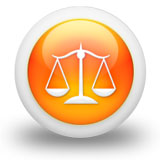We need your consent to use the individual data so that you can see information about your interests, among other things. Click "OK" to give your consent.
ASTM D7095-17
Standard Test Method for Rapid Determination of Corrosiveness to Copper from Petroleum Products Using a Disposable Copper Foil Strip
Translate name
STANDARD published on 1.10.2017
The information about the standard:
Designation standards: ASTM D7095-17
Note: WITHDRAWN
Publication date standards: 1.10.2017
SKU: NS-799296
The number of pages: 9
Approximate weight : 27 g (0.06 lbs)
Country: American technical standard
Category: Technical standards ASTM
The category - similar standards:
Annotation of standard text ASTM D7095-17 :
Keywords:
automotive gasoline, aviation gasoline, aviation turbine fuel, copper corrosion, copper foil strip, corrosiveness to copper, natural gasoline,, ICS Number Code 77.060 (Corrosion of metals),77.120.30 (Copper and copper alloys)
Additional information
| Significance and Use | ||||||||||||||||||||||
|
4.1 Crude petroleum contains sulfur compounds, most of which are removed during refining. However, of the sulfur compounds remaining in the petroleum product, some can have a corroding action on various metals, including copper, and this corrosivity is not necessarily related to the total sulfur content. The effect can vary according to the chemical types of sulfur compounds present. This copper foil strip corrosion test is designed to assess the relative degree of corrosivity of a petroleum product towards copper and copper-containing alloys using a shorter test duration than that specified in Test Method D130. 4.2 Some sulfur species may become corrosive to copper only at higher temperatures. Thus, higher test temperatures, particularly 100 °C (212 °F), may be used to test some products by the pressure vessel procedure. |
||||||||||||||||||||||
| 1. Scope | ||||||||||||||||||||||
|
1.1 This test method covers the determination of the corrosiveness to copper of aviation gasoline, aviation turbine fuel, automotive gasoline, natural gasoline, or other hydrocarbons having a vapor pressure no greater than 124 kPa (18 psi), cleaners (for example, Stoddard solvent), kerosine, diesel fuel, distillate fuel oil, lubricating oil, and other petroleum products. 1.2 The values stated in SI units are to be regarded as the standard. 1.2.1 Exception—The values in parentheses are provided for information only. 1.3 This standard does not purport to address all of the safety concerns, if any, associated with its use. It is the responsibility of the user of this standard to establish appropriate safety, health, and environmental practices and determine the applicability of regulatory limitations prior to use. 1.4 This international standard was developed in accordance with internationally recognized principles on standardization established in the Decision on Principles for the Development of International Standards, Guides and Recommendations issued by the World Trade Organization Technical Barriers to Trade (TBT) Committee. |
||||||||||||||||||||||
| 2. Referenced Documents | ||||||||||||||||||||||
|
We recommend:
Updating of laws
Do you want to be sure about the validity of used regulations?
We offer you a solution so that you could use valid and updated legislative regulations.
Would you like to get more information? Look at this page.




 Cookies
Cookies
